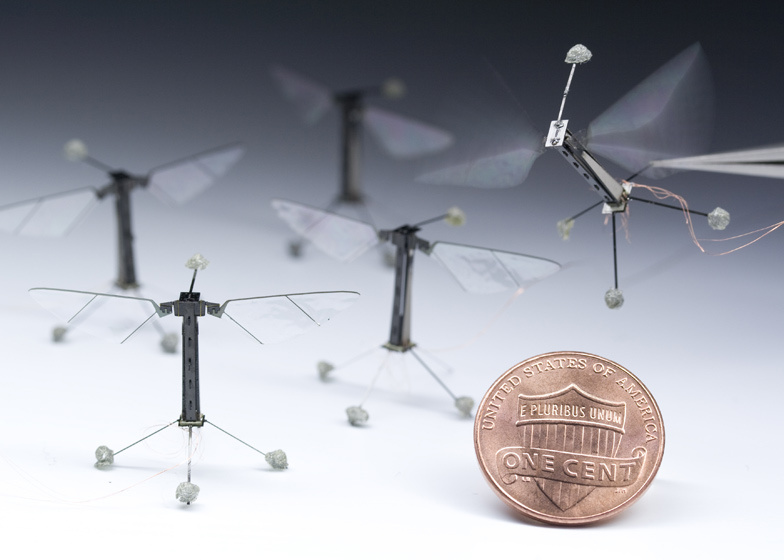News: a tiny robotic insect that hovers in the air like a fly has been built by scientists at Harvard University (+ movies).
The robot, which weighs just 80 milligrams and is the size of a small coin, can hover in the air for up to 20 seconds.
Its Harvard University developers modelled the robot's movement on real flies, which flap their wings around 120 times per second.
The researchers made the wings with piezoelectric material, which contracts when a small electrical charge is passed through it.
Switching the voltage on and off at high speeds produces a rapid contracting effect that mimics the movement of a fly's tiny wing muscles.
For now, the robots have to be tethered to thin copper wires that provide electric power and navigation information, but the researchers hope that a battery will one day be lightweight enough to be attached to the robot itself.
The team suggests the robots could be used for search-and-rescue operations, monitoring environmental damage, tracing chemicals or pollinating crops, while their discreet size could also make them suitable for military surveillance.
The RoboBee project was reported in the journal Science this week by Dr Robert Wood and his team at Harvard's Wyss Institute for Biologically Inspired Engineering at Harvard.
Last year we reported on robot helicopters programmed to lift and stack polystyrene bricks into a six metre-high tower, while other machines we've featured include a duo of robotic bartenders and a robotic 3D printer that builds architecture from sand – see all robots.
Photographs are by Kevin Ma and Pakpong Chirarattananon.

